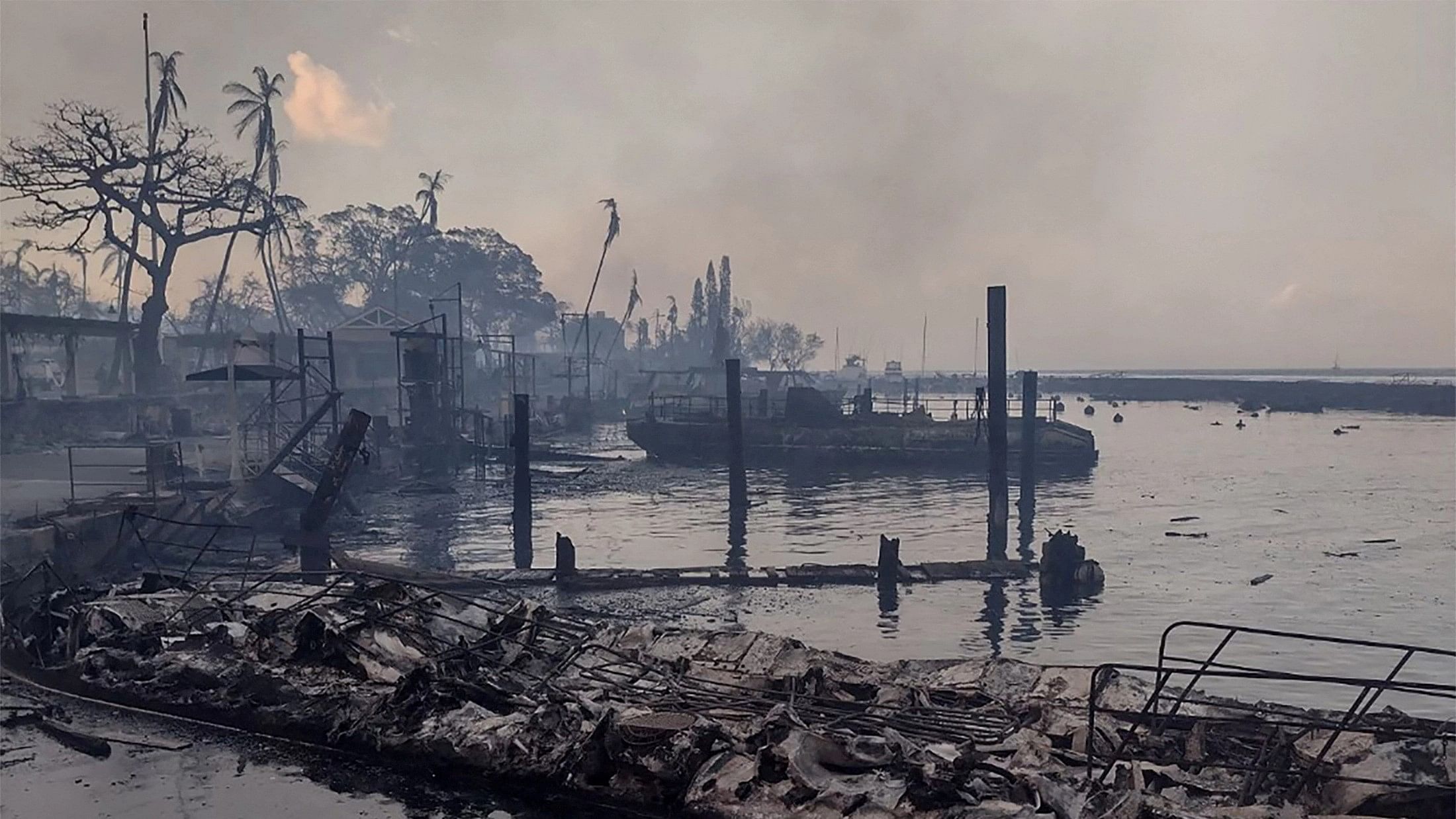
Credit: Mason Jarvi/Handout via Reuters
At least 80 people have been confirmed to be killed by wildfires that raged uncontrolled on the famously beautiful Hawaiian island earlier this week. People were left with little time to flee from the fast-moving flames, and a few even fled into the ocean to avoid the blaze. Officials say they expect the death toll to rise, and news reports have included accounts of people looking for missing relatives.
The wildfires are “likely the largest natural disaster in Hawaii state history,” said Governor Josh Green in a news conference on August 10.
The devastating Maui fires, along with some on Hawaii’s Big Island, are the product of a confluence of weather conditions—namely, strong winds, dry vegetation and low humidity—says Robert Bohlin, a meteorologist at the National Weather Service’s (NWS’s) office in Honolulu.
The stage was set by drought conditions across various parts of the state’s islands, especially Maui. “This is the time of year when we start to dry out,” Bohlin says. That typical dryness has been exacerbated by weaker-than-normal trade winds that have kept rain away, according to the US Drought Monitor. Drought dries out grasses and other vegetation, making them more likely to ignite in a wildfire.
Two other factors have been a large atmospheric pattern that features a strong high-pressure area to the north of the islands and a strong low-pressure area—in the form of Hurricane Dora—to the south. Wind tends to flow from high-pressure areas to low-pressure ones, and the stronger the pressure difference, the faster the winds. “We’re in that sweet spot between that very strong high and that very strong low,” Bohlin says. And the islands’ rugged terrain can sometimes funnel those winds and create stronger gusts. The NWS had warned of winds of 30 to 45 miles per hour, with gusts up to 60 mph.
Such strong winds can quickly spread flames. “The fire can be a mile or more from your house, but in a minute or two, it can be at your house,” said Maui County’s fire assistant chief Jeff Giesea in a recent press release from the county.
The large atmospheric patterns “also brought in some really dry air,” Bohlin says, which promotes fire growth as well.
All of these conditions make it very difficult for firefighters to beat back the flames, which can spread faster and more unpredictably. Firefighting aircraft have been unable to fly because of the high winds, according to news reports.
The spreading flames have destroyed numerous homes, historic buildings and businesses on the major tourist strip of Front Street in the town of Lahaina on the western side of Maui. “About 80 per cent of Lahaina is gone,” Green said on Thursday, according to CNN.
Parts of this side of the island have no landline or cell-phone service, according to the county government. Thousands of people are also without power. Visitors have been asked to leave Maui because of limited resources on the island. President Joe Biden has declared a major disaster for Hawaii, the National Guard has been deployed, and the Federal Emergency Management Agency is working on the ground to distribute supplies.
The fire that swept through Lahaina was 80 percent contained as of Thursday morning. The Pulehu fire to the south was 70 percent contained. No containment information was available for the Upcountry fire in the middle of the southern portion of the island.
Both state officials and insurance experts have said the economic losses are likely to reach into the billions of dollars. The US already saw a record of 15 weather and climate disasters that cost at least a $1 billion each over the first seven months of the year.